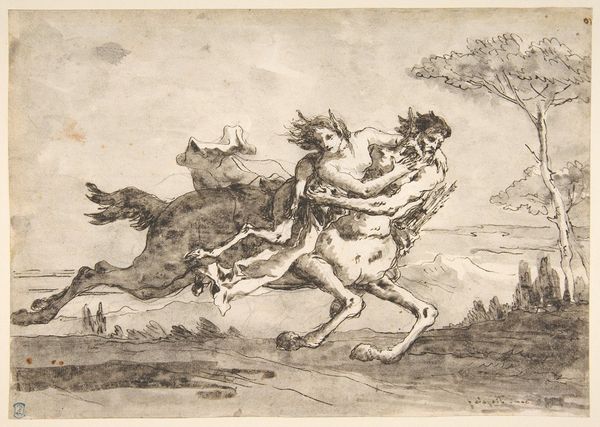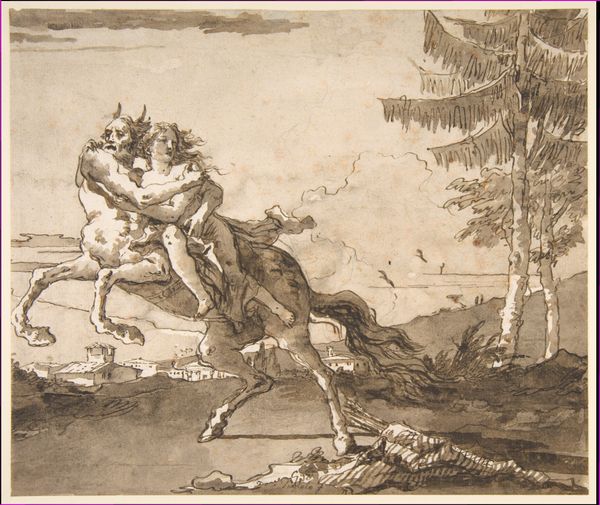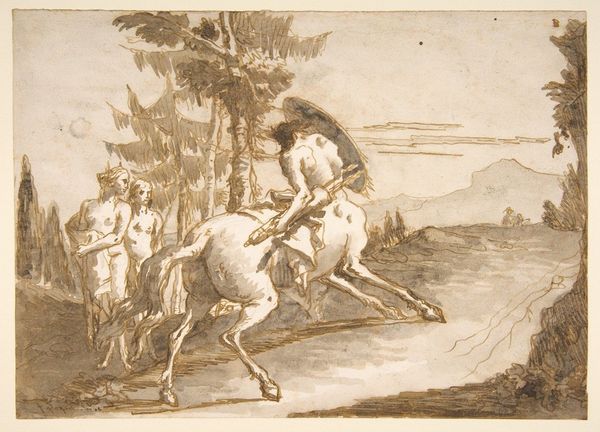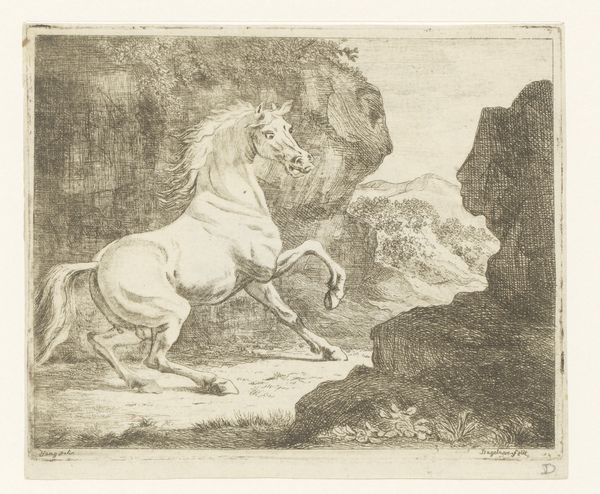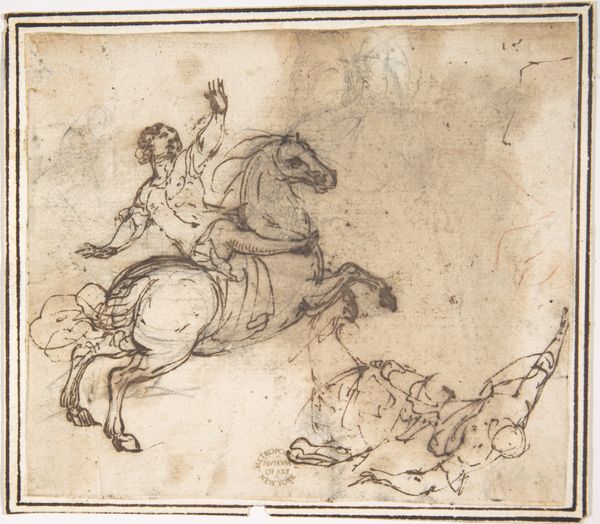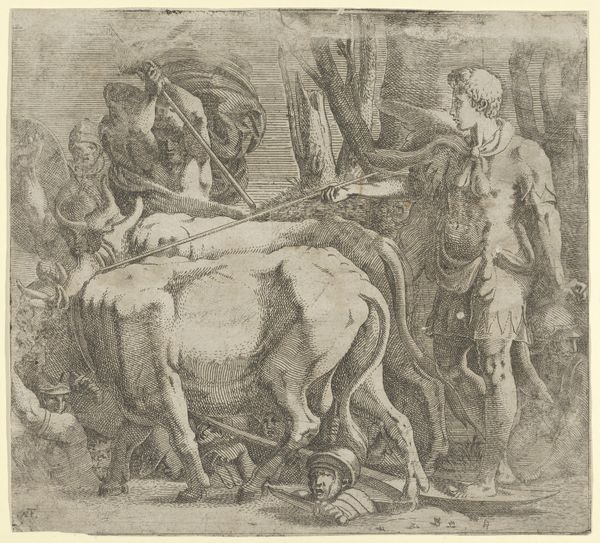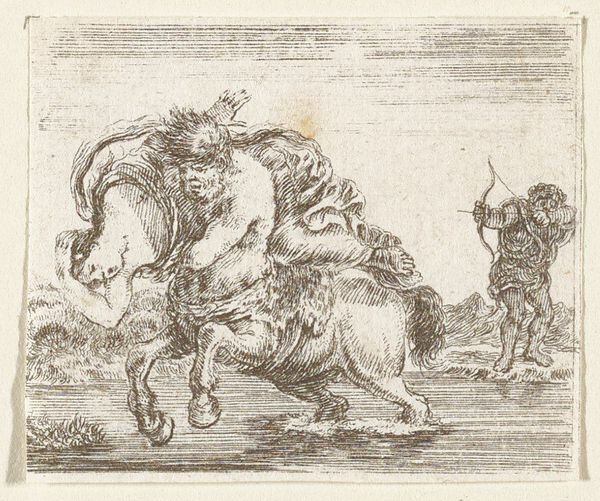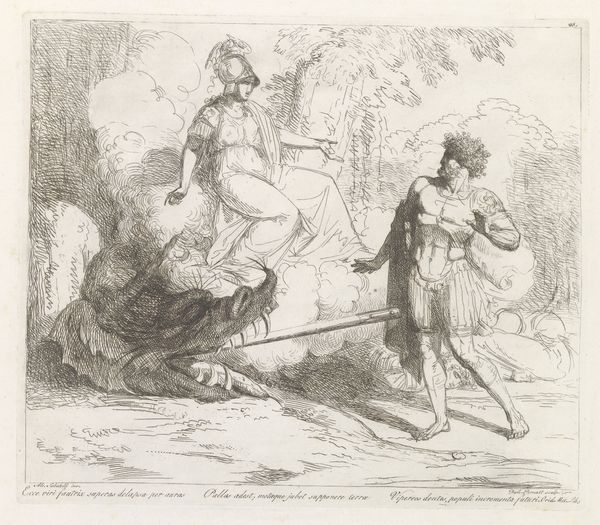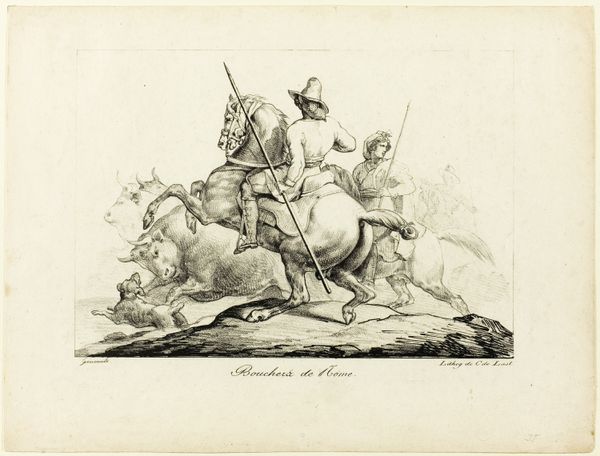
Dimensions: 7-5/8 x 10-13/16 in. (19.3 x 27.4 cm)
Copyright: Public Domain
Editor: What a fascinatingly ambiguous print! The tonal range creates a wistful mood, almost like a faded memory. The figure’s back is facing us. Curator: Indeed. This work is "Centaur Holding Up a Quiver" by Giovanni Domenico Tiepolo. It was created sometime between 1727 and 1804. It's currently held at the Metropolitan Museum of Art. For me, the immediate observation stems from examining representations of centaurs during the Baroque era in conjunction with emerging societal narratives around colonialism. The centaur, a figure historically representing untamed nature, can also symbolize "the other," an interpretation loaded with the complex dynamics of the period's expanding global reach. Editor: Interesting. Before we explore such symbolism, may I point to Tiepolo’s lines? Look closely. How does Tiepolo manipulate the washes to evoke both depth and delicacy? He plays with varying pressures of his tools! Semiotically, this manipulation creates signs and connotations that enhance this work. Curator: I concede Tiepolo's draftsmanship is skillful. But doesn’t his choice to depict a centaur carrying a quiver open a dialogue about violence and the ready accessibility of weaponry? Consider how such visual vocabulary permeated contemporaneous discussions about governance and civic responsibilities—and access to power and weapons across lines of class, gender, and, most potently, race. What message does Tiepolo, a product of his milieu, subtly broadcast? Editor: Ah, but the lines and composition are hardly violent, if one looks closely. Doesn’t the idyllic background contrast strikingly with our centaur? It creates such a complex tension. Curator: Precisely! Tiepolo acknowledges pastoral harmony while reminding his viewers, potentially unconsciously, of underlying societal fissures. A centaur’s placement at a fulcrum suggests both stability and inherent instability. Editor: Whether read through the lens of historical context or formal elements, the Tiepolo challenges assumptions! Curator: Certainly. I am happy for such perspectives, allowing deeper interpretations that resonate in contemporary dialogues on societal issues and power structures.
Comments
No comments
Be the first to comment and join the conversation on the ultimate creative platform.
